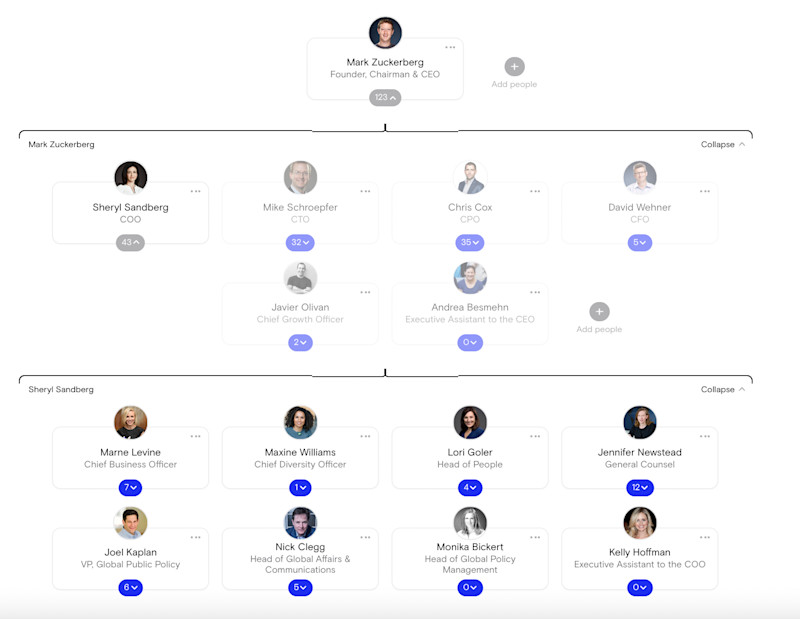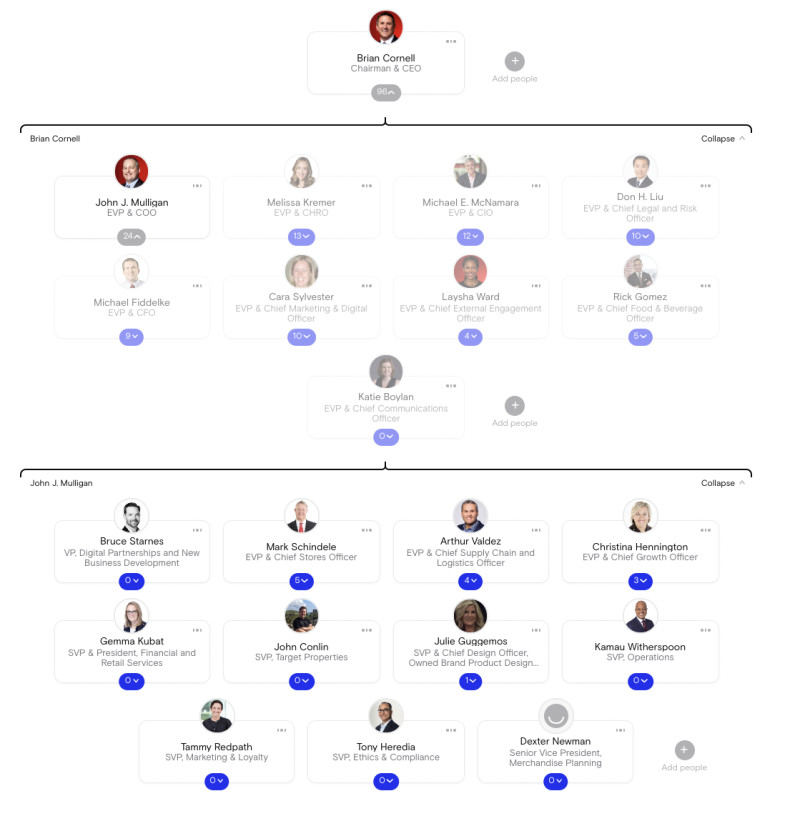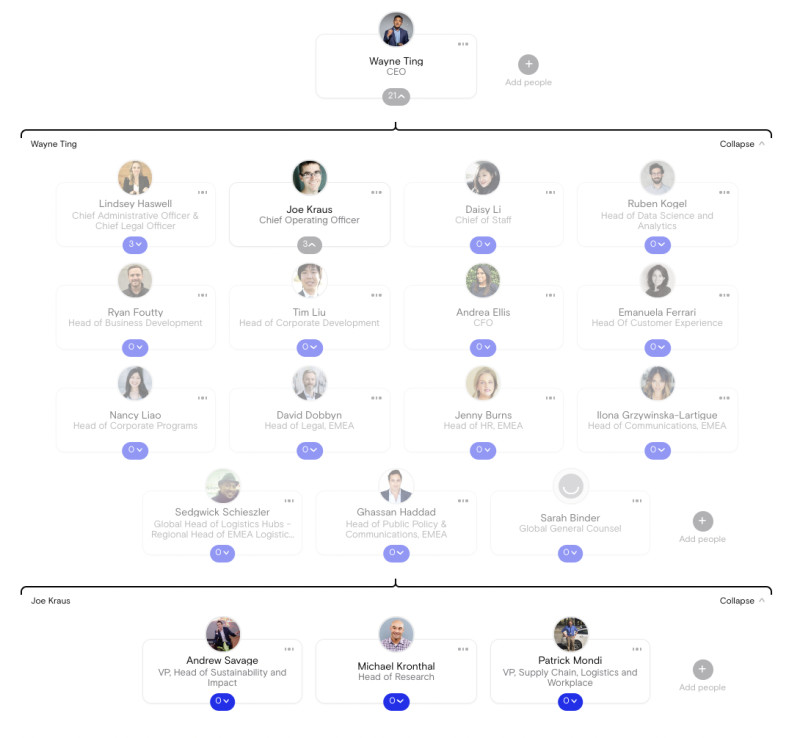- Iterate
- Job Titles
- What is a Chief Operating Officer (COO)?
Table of contents
The Chief Operating Officer (COO) is a senior executive who oversees the administrative and operational functions of a company. Although not always included in the makeup of a company, those that do hold a COO position in their C-suite will attest to the invaluable role that they play in day-to-day operations.

At any company, the Chief Operating Officer (COO) is a member of an organization's C suite and the CEO’s second-in-command. But what exactly does a COO do? And what skills and experience does someone need to become a COO?
What is a COO?
The COO is a senior executive who oversees the administrative and operational functions of a company. The COO usually oversees all of the business’s operations and may alternatively hold the title of VP of Operations. They provide leadership and management to help the company reach its goals. The COO is responsible for making sure the company operates efficiently.
CEO vs. COO
A Chief Executive Officer (CEO) comes up with the vision and long-term goals for the company. This differs from a COO’s role.
The COO is responsible for executing the company’s business plan to meet those goals and achieve that vision.
The COO is usually the CEO’s second-in-command and reports directly to them. Often, the COO handles the company’s internal operations while the CEO is the public face of the company and reports to the board of directors.
Where a COO sits in an organizational chart
To give you a better idea of where the COO fits into an organization’s structure, here are some examples from real company org charts.
1. Meta
Meta COO Sheryl Sandberg reports directly to CEO Mark Zuckerberg. Sandberg’s direct reports include VPs, fellow C-level executives, and other department leaders. She oversees all of the operational functions of the company.
2. Target
Target COO John Mulligan is also the company’s Executive Vice President (EVP). He reports directly to Brian Cornell, the Chairman and CEO. Mulligan’s direct reports are all SVPs, EVPs, or Presidents. This is a standard organizational structure for a large company like Target.
3. Lime
Lime is a smaller company than Target and Facebook, so its COO, Joe Kraus, only has 3 direct reports — all of whom are the heads of their respective departments. Kraus reports directly to CEO Wayne Ting.
The modern COO
As of 2015, reports showed a general decline in companies operating with a COO. However, this trend might reverse.
As companies continue to get larger and more multifaceted, the role of the COO becomes increasingly valuable. Their presence alleviates much of the weight put on the CEO’s shoulders in dealing with day-to-day operations. The more that companies expand internationally, the more valuable the COO becomes — after all, what is a COO if not an integral player in keeping everyone on the same page and moving toward the same goals?
Seven types of COOs
According to Harvard Business Review, there are seven main types of Chief Operating Officers.
1. The executor
The executor is what most people think of when they hear the term COO. Executors keep an eye on the day-to-day operations within the company while the CEO focuses on the company vision, public relations, and larger-scale decisions. In this role, the COO can help streamline the CEO’s responsibilities by minimizing their need to keep close tabs on the inner workings of the company.
2. The change agent
This type of COO is often found in companies experiencing stagnation in vision or market performance. Change agent COOs are brought in to reinvent or reinvigorate the public’s interest in the company. They are sometimes brought in from a different industry and present a unique set of skills and experiences.
3. The mentor
Sometimes, a company’s CEO is inexperienced in the business world. If the CEO is the inventor or founder of the product or service that the company delivers, their expertise may not extend much further than that. A mentor COO is often a seasoned professional who will help guide the CEO through difficult business decisions.
4. The other half
In this role, the COO’s relationship to the CEO is similar to that of the left and right sides of the brain. The CEO may be rash, unpredictable, and flighty — so their COO counterpart must be grounded and logic-oriented. This allows the CEO to think more abstractly. The COO helps balance the CEO by attending to a workforce’s need for consistent instruction, information and communication.
5. The heir apparent
This COO might be seen as though they’re being “groomed” to take over for the CEO. If a CEO is making plans to retire or to hand over the company, having their next-in-line shadow them so that they might learn the ropes can be a great way to streamline the transition.
6. The MVP
A former staff member may rise to the rank of COO if they display a high level of value to a company. This is a way to keep that individual at the company by offering higher status and compensation, making them less likely to leave for a competing offer.
7. The partner
Some CEOs work better as part of a team. They appreciate the ability to bounce ideas off someone and to draw knowledge and skill from someone else. In these cases, a partner-style COO could be best. While the CEO technically outranks the COO, they share a close to equal standing in the company and operate almost as a single entity.
Career path to COO
COOs can come from a huge variety of career paths, backgrounds and industries. One thing most COOs share, however, is experience. Since the role is often advisory, a well-equipped COO should have extensive experience in the business world.
A COO typically also has experience within the company’s field. The CEO and board look to the COO to bring skill, knowledge, and expertise to the company. COOs should have years of experience in different operational areas of a company. They should also have leadership experience and be comfortable managing different departments and different personalities.
In addition to experience, most COOs will have a university background and, at the very least, a bachelor’s degree. Many COOs have a Masters in Business Administration (MBA). Traditional, large companies almost always require an MBA — but more executives these days don’t have degrees. Experience is often more important than a degree.
If you're thinking about your own path to the COO spot, it's probably a good idea to see where you stand at your job today and how you might progress. One easy way to do that is to join your company's public org chart.
COO strengths and skills
COOs are responsible for all of the company’s operations — they need to have a strong skill set to help the company reach its goals and execute the CEO’s vision. Here are some of the top skills and strengths that COOs need.
Selflessness
Although COOs are largely responsible for steering the corporate ship and, thus, are responsible for the performance of a company, their share of the spotlight will always be a fraction of the CEO’s share. Their work is almost always behind the scenes, though that doesn’t diminish its importance.
Communication
COOs must have great communication skills, both in communicating with other executives (and the CEO) and when communicating with the teams and departments they oversee. They need to be able to build consensus among internal stakeholders, mediate conflict, and negotiate.
They must also be prepared to act as a spokesperson for both the staff and C-suite of a company. As they often control the flow of communication through these levels of a corporation, attentiveness and dependability are a must.
Ability to think strategically
COOs need to be strategic thinkers who are able to turn the CEO’s vision into a reality with measurable results. They have to make sure that all of the company’s operations are working toward the same strategy and goals.
Delegation
COOs have to strategically delegate tasks to different departments and teams. To master delegation, they need to understand how to match departments’ strengths and skills with the tasks and goals at hand so that everyone on the team can be effective and motivated toward the same vision.
What is a COO’s salary?
Because there are COOs in so many different industries and with such varying levels of experience, it’s hard to pinpoint the average COO salary. So what is a COO usually making in the US?
According to Salary.com, the average annual salary of a COO in the US is $469,286 as of March 2020.
On the other hand, the US Bureau of Labor Statistics lists the 2018 median pay for “Top Executives” as $104,690 per year.
COOs may be brought in to perform senior advisory roles, or they might be less-experienced younger individuals fast-tracked for an executive position. The level of experience, industry and responsibilities all factor greatly into their compensation.





